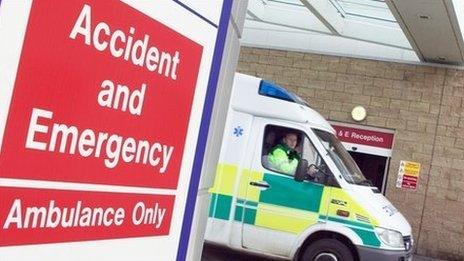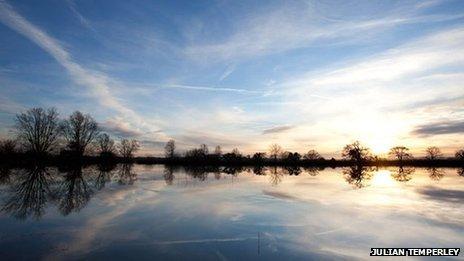Did the NHS get lucky this winter?
- Published

Overall this winter the NHS has hit its waiting time target
In the months leading up to winter, there was real concern within government about the damaging headlines it might bring.
Last year the health service in England saw A&E waiting times hit their highest levels for nine years, leading to the four-hour A&E target being missed from January to March.
The problems continued into the summer and crisis meetings began to be held.
Extra money was found to help relieve the pressures and Health Secretary Jeremy Hunt was reported to be phoning up hospitals that were struggling.
But then it all went quiet. Individual hospitals have experienced problems, but overall the NHS has hit its waiting time target as Friday's analysis by the BBC for its NHS Winter project shows.
So did the NHS get lucky or was it - as the government claims - a sign of good planning?
Hospitals have certainly benefited from the fact that the winter was one of the mildest on record.
The average temperature for England was 5.8C - making it the fifth warmest since 1910.
Cold, icy weather spells trouble for the NHS for two main reasons: it leads to an increase in falls and respiratory illness.
But levels of flu and acute bronchitis are both at their lowest for a decade - in fact flu is at its lowest since records began in 1970.
Performed well
Other problems have been kept largely in check too. Take norovirus, the vomiting bug that plays havoc on wards forcing the closure of beds, for example.
Last year during the winter months over 1,000 beds were closed at any one point with a peak of 3,000 beds closed at one point during the 2012 festive period.
By comparison, this winter the number of bed closures has rarely broken the 1,000 mark.
But ministers also argue the extra money they gave the system - £250m in the summer and another £150m in November - has had an impact too.

The winter may have been wet, but it has also been mild which is good for the NHS
That may be true. There have been fewer delays for ambulances dropping off patients at A&E, although the waits to discharge patients into the community have got worse.
But there is also a suspicion that hospitals have reacted to the pressure being applied by increasing the number of emergency admissions - the weekly totals have been up to 8% higher this winter compared to the corresponding week last year.
In terms of influencing performance against the target, emergency admissions are important because once a patient is admitted the clock stops ticking.
Research shows that you are much more likely to be admitted in the final 10 minutes of the four-hour target than you are beforehand.
Of course, it could be just coincidence. But A&E doctors I have talked to this winter say the spectre of missing the target is undoubtedly a factor in decision-making.
However, regardless of the reasons, the NHS in England has performed remarkably well - particularly in comparison to Wales and Northern Ireland.
But it is telling that even with all these factors in its favour, it has still been a struggle for many of England's busiest hospitals. Nearly two thirds of the major units still missed the four-hour target.
Why? Ask A&E doctors and they will tell you the extra money and advantageous conditions have only papered over the cracks.
Staff shortages still remain a key problem, while demands are rising (attendances have increased by one million in the past three years).
Cliff Mann, of the College of Emergency Medicine, calls it the "perfect storm" that will continue to batter A&E.
The warning is clear: the battle may have been won, but the war is far from over.